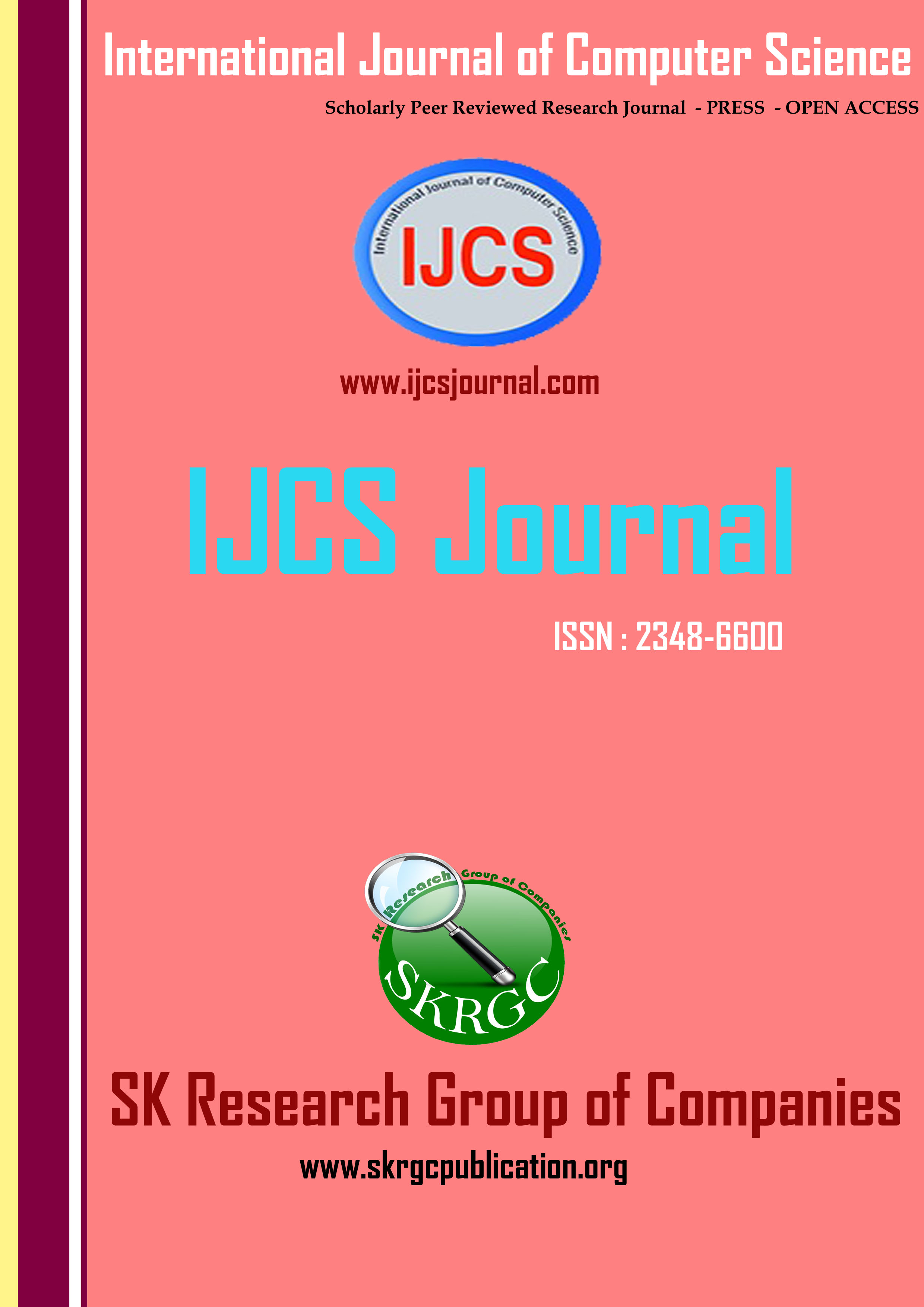Contribution to K-Nearest neighbour’s system for under water mine classification
International Journal of Computer Science (IJCS) Published by SK Research Group of Companies (SKRGC)
Download this PDF format
Abstract
This paper review mine detection and classification using high resolution images of the seafloor and under water mine by K-Nearest Neighbors algorithm the k-Nearest Neighbors algorithm (or k-NN for short) is a non-parametric method used for detection and classification In both cases, the input consists of the k closest training examples in the attribute space. The result depends on whether k-NN is used for detection or classification: e contributions concentrate on feature selection and object classification. the mine classification provide different method like Sophisticated Filter Method, Ensemble Learning, Automatic Target Recognition (ATR), Composite Relevance measure (CRM) , Semester-Shafer theory but these method are not clear classification in mine according to the object. Recent researchers are focus on the better classification according to the object information by K-Nearest Neighbors (K-NN).
References
[1] T. Fei and D. Kraus, “An expectation-maximization approach assisted by Dempster–Shafer theory and its application to sonar image segmentation,” in Proc. IEEE ICASSP, 2012
[2] D. A. Bell and H. Wang, “A formalism for relevance and its application in feature subset selection,” Mach. Learn., vol. 41, no. 2, pp. 175–195, Nov. 2000
[3] Mahmood R .Azimi-Sadjadi ”Underwater Target Classification Using Wavelet Packets and Neural Networks”, Senior Member ,IEEE, De Yao Qiang Huang,and GeraldJ .Dobeck
[4] S. Reed, Y. Petillo t and J. Bell”Automated approach to classification of mine-like objects in sidescan sonar using highlight and shadow information” IEE Proc.-Radar Sonar Navig., Vol. 151, No. 1, February 2004
[5] Scott Reed,Yvan Petillote, and JudithBell IEEE Journal OFOCEANIC ENGINEERING, VOL.28, NO.1,JANUARY2003 S. Johnson and A. Deaett, “The
[6] ]application of automated recognition techniques to side-scan sonar imagery,” IEEE J. Ocean. Eng., vol. 19, no. 1, pp. 138–144, Jan. 1994.
[7] L. Henriksen, “Real-time underwater object detection based on an electrically scanned high-resolution sonar,” in Proc. Symp. Auton. Underwater Veh. Technol., 1994, pp. 99–104.
[8] R. Fandos and A. M. Zoubir, “Optimal feature set for automatic detection and classification of underwater objects in SAS images,” IEEE J. Sel. Topics Signal Process., vol. 5, no. 3, pp. 454–468, Jun. 2011.
[9] J. E. Piper, R. Lim, E. I. Thorsos, and K. L. Williams, “Buried sphere detection using a synthetic aperture sonar,” IEEE J. Ocean. Eng., vol. 34, no. 4, pp. 485–494, Oct. 2009.
[10] M. Hayes and P. Gough, “Synthetic aperture sonar: A review of current status,” IEEE J. Ocean. Eng., vol. 34, no. 3, pp. 207–224, Jul. 2009.
[11] J. Piper, K. Commander, E. Thorsos, and K. Williams, “Detection of buried targets using a synthetic aperture sonar,” IEEE J. Ocean. Eng., vol. 27, no. 3, pp. 495–504, Jul. 2002.
[12] V. Myers and D. Williams, “Adaptive multi view target classification in synthetic aperture sonar images using a partially observable Markov decision process,” IEEE J. Ocean. Eng., vol. 37, no. 1, pp. 45–55, Jan. 2012.
[13] R. Fandos, A. M. Zoubir, and K. Siantidis, “Unified design of a fea-ture based ADAC system for mine hunting using synthetic aperture sonar,” IEEE Trans. Geosci. Remote Sens., vol. 52, no. 5, pp. 2413–2426, May 2014.
[14] T. Fei and D. Kraus, “An expectation-maximization approach assisted by Dempster–Shafer theory and its application to sonar image segmentation,” in Proc. IEEE ICASSP, 2012, pp. 1161–1164.
[15] ]R. Fandos and A. M. Zoubir, “Enhanced initialization scheme for a three-region Markovian segmentation algorithm and its application to SAS images,” in Proc. 10th ECUA, 2010, vol. 3, pp. 1323–1331.
[16] S. Reed, Y. Petillot, and J. Bell, “An automatic approach to the detection and extraction of mine features in side scan sonar,” IEEE J. Ocean. Eng., vol. 28, no. 1, pp. 90–105, Jan. 2003.
[17] M. Yang, K. Kpalma, and J. Ronsin, A Survey of Shape Feature Extraction Techniques. In Tech, 2008, ch. 3, pp. 43–90.
[18] M. Shell. (2002) IEEEtran homepage on CTAN. [Online]. Available:https://www.ctan.org/texarchive/macros/latex/contrib/ supported/IEEEtran/hh
Keywords
Component, formatting, style, styling, insert.

